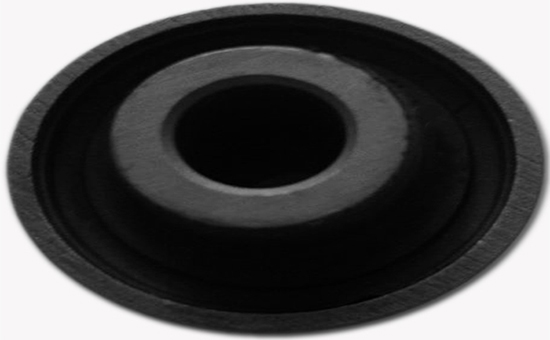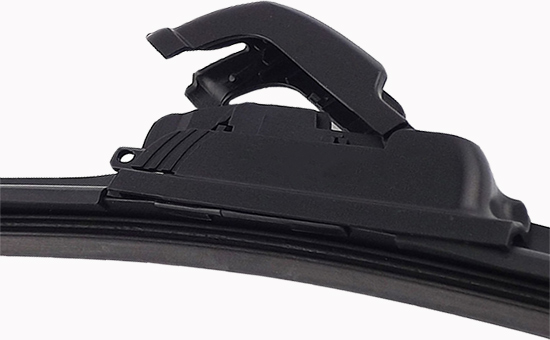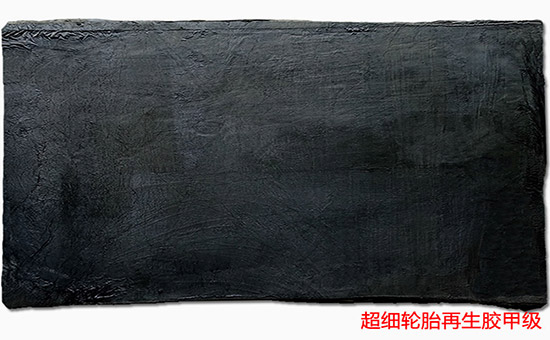There are hundreds of rubber parts in cars. In addition to rubber tires, rubber sealing products, and rubber tubes, there are also many rubber sundries, such as car wiper blades, brake friction materials, chassis rubber pads, steering wheel handles, and rubber mudguards. Board, car seat cover, etc. This kind of rubber products do not have particularly high requirements on the mechanical strength of the product, and can be blended with tire reclaimed rubber to effectively reduce the cost of raw materials under the premise of ensuring product quality.
1. Car chassis rubber pad
Automobile chassis rubber pads are generally processed from natural rubber as the main raw material, and their main functions are shock absorption and cushioning. Tire reclaimed rubber can replace natural rubber to produce automobile chassis pads, effectively reducing raw material costs. In actual production, tire reclaimed rubber 2YLYY124 can be used alone or in combination with natural rubber or general-purpose synthetic rubber such as styrene butadiene rubber to produce a lower cost and better overall performance of vehicle chassis rubber pads.

100 parts of reclaimed tire rubber, 1.5 parts of zinc oxide, 1 part of stearic acid, 50 parts of clay, 25 parts of light calcium, 7.5 parts of petroleum asphalt, 10 parts of asphalt oil, 0.75 parts of accelerator M, 0.25 parts of accelerator D, 2 parts of sulfur ; Total: 198 copies.
2. Car steering wheel handle
Automobile steering wheel handles processed with rubber as the main raw material are flexible and have a longer service life. Most of them use natural rubber or natural rubber/styrene-butadiene rubber as the main raw material, with sulfur, accelerator, zinc oxide, and stearic acid. , Coumarone, paraffin and other rubber additives, and rubber powder can be added if necessary. In actual production, the main components of tire reclaimed rubber include natural rubber, synthetic rubber, carbon black, etc., which can be used together with natural rubber and styrene-butadiene rubber to produce automobile steering wheel grip covers, reducing costs.
60 parts of styrene butadiene rubber, 120 parts of reclaimed tire rubber, 3.5 parts of zinc oxide, 3 parts of paraffin, 140 parts of heavy calcium, 7 parts of engine oil, 7 parts of accelerator DM, 0.7 parts of accelerator TMTD, 2.7 parts of sulfur, total: 343.9 parts .

3. Car rear mudguard
The rear wheel fenders of automobiles include rubber baffles, plastic baffles, metal baffles, etc., which can block mud and sand from splashing during the driving of the vehicle. Rubber fenders are mostly made of natural rubber or natural rubber/synthetic rubber combined with rubber. A large amount of tire reclaimed rubber can effectively reduce the cost of raw materials; an appropriate amount of rubber powder can further reduce costs; in theory, the higher the fineness of the tire The application effect of reclaimed rubber and reclaimed rubber powder in mudguards is better.
When using reclaimed rubber to reduce the cost of raw materials for white and colored rubber fenders, rubber product manufacturers can also use white latex reclaimed rubber or colored latex reclaimed rubber of the corresponding color to improve the overall performance of the product.

20 parts of natural rubber, 160 parts of reclaimed tire rubber, 30 parts of rubber powder, 3 parts of zinc oxide, 1 part of stearic acid, 2 parts of paraffin wax, 20 parts of carbon black N550, 300 parts of light calcium, 25 parts of petroleum pitch, 20 parts of mineral oil Parts, 0.5 parts of accelerator CZ, 0.25 parts of accelerator D, 3 parts of sulfur, total: 584.75 parts.
There are many miscellaneous rubber products in automobiles, and a large part of miscellaneous products can be mixed with a certain proportion of reclaimed tire rubber. Later, the editor will have the opportunity to discuss related issues with you.
Exclusive original article [commercial authorization] reprint, excerpt and excerpt in any form are prohibited without written authorization. Focus on Hongyun rubber: learn the process formula and raw material technology of producing rubber products from recycled rubber to help you reduce costs and increase profits